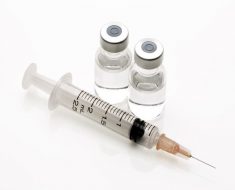The right estrogen levels are essential for reproductive health. Having too much or too little estrogen can also lead to medical problems, such as weak bones, urinary tract infections, and even depression.
Doctors may order an estradiol test if they are concerned about a person’s fertility, puberty, or menopause. In this article, we examine when a doctor might order this test, what the results can mean, and what to expect during and after the test.
Why might it be used?

Doctors will likely request an estradiol test if they want to find out more about why a person’s sex characteristics are developing in a certain way.
Although estrogen is known as a female sex hormone, it also plays a role in male growth and development.
Estradiol levels can affect how the reproductive system develops. Abnormally high or low levels can influence how the following parts of the body grow and work:
- womb
- fallopian tubes
- vagina
- breasts
- libido
- erectile function
- sperm cells
During their reproductive years, women usually have their highest levels of estradiol. After reaching menopause, estradiol levels are much lower.
Problems caused by abnormal levels of estradiol include:
- menstrual problemssymptoms of the transition to menopause
- infertility
- gynecomastia or a benign swelling of the male breast tissue
- ovarian tumors
- breast cancer
An estradiol test can detect early or late puberty. If a child appears to be starting puberty earlier or later than expected, a doctor may order this test.
Transgender women may take estradiol as part of their hormone therapy to develop more female characteristics. If so, their doctor may wish to perform regular estradiol tests to monitor their levels.

While some blood tests require a person to avoid eating or drinking beforehand, people taking an estradiol test do not need to make any special preparation.
If a person is taking any medication, such as birth control or hormone therapy medication, they must tell their doctor before they have the test. Certain forms of medication could affect the results.
What to expect during the test
To carry out an estradiol test, a doctor or nurse will take a blood sample from a person’s arm or hand. They will clean the area and then look for a suitable vein.
They will use a needle to draw blood from the area, which they will then send to a laboratory for testing.
What do the results mean?
The results of an estradiol test vary from person-to-person and will indicate different things, depending on the individual. Many factors can affect what the results mean, such as age, sex, and health history.
Doctors measure estradiol levels in picograms per milliliter (pg/ml).
- In premenopausal females, normal estradiol levels are 30 to 400 pg/ml.
- In postmenopausal females, normal estradiol levels are 0 to 30 pg/ml.
- In males, normal estradiol levels are 10 to 50 pg/ml.
If the test results indicate low estradiol levels, they could signal one of the following:
- ovarian failure
- menopause
- low estrogen levels due to rapid weight loss
- low levels of pituitary hormones
- failing pregnancy
- Turner syndrome, a chromosomal condition that can cause infertility
If the test results indicate high estradiol levels, they could signal one of the following:
- hyperthyroidism
- liver damage
- gynecomastia
- tumors in the ovaries, testicles, or adrenal glands
Pregnancy and a person’s menstrual cycle can affect the results in the following ways:
- Estradiol levels are higher during pregnancy as the placenta produces estradiol.
- During the menstrual cycle, estradiol levels are highest during ovulation and lowest during menstruation.
In adolescents, high levels of estradiol could signal early puberty in girls and delayed puberty in boys.

An estradiol test alone cannot diagnose a specific disease. If the test results show low or high levels of estradiol, a doctor may recommend further tests to help pinpoint a diagnosis.
If a doctor thinks that infertility could be a cause, they may prescribe a test to check a person’s levels of follicle-stimulating hormone (FSH).
In females, FSH is responsible for stimulating egg production, and in males, it triggers sperm production. Low levels of FSH may suggest problems with fertility.
What happens next
A person should ask their doctor how they will let them know their test results. If the test results suggest low or high levels of estradiol, the doctor will advise the best steps to take next.
Depending on the results and underlying cause, a doctor may suggest one of the following courses of action:
- changes to medication
- new medication
- referral to a specialist
- additional tests or procedures
- further testing and monitoring of estradiol levels
Summary
An estradiol test is a simple form of blood test that doctors use to assess levels of a particular type of estrogen in the body.
As estrogen is critical in so many areas of health, the test will often be the first step in assessing ways to improve many different aspects of a person’s well-being.
Source: Read Full Article





